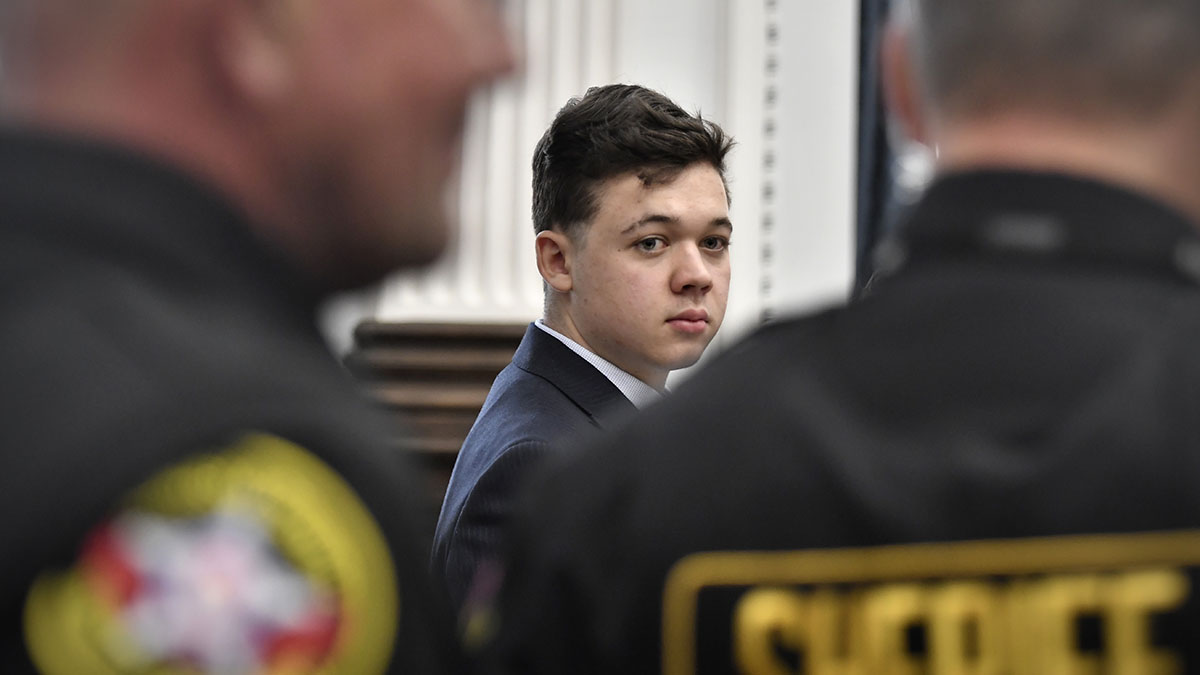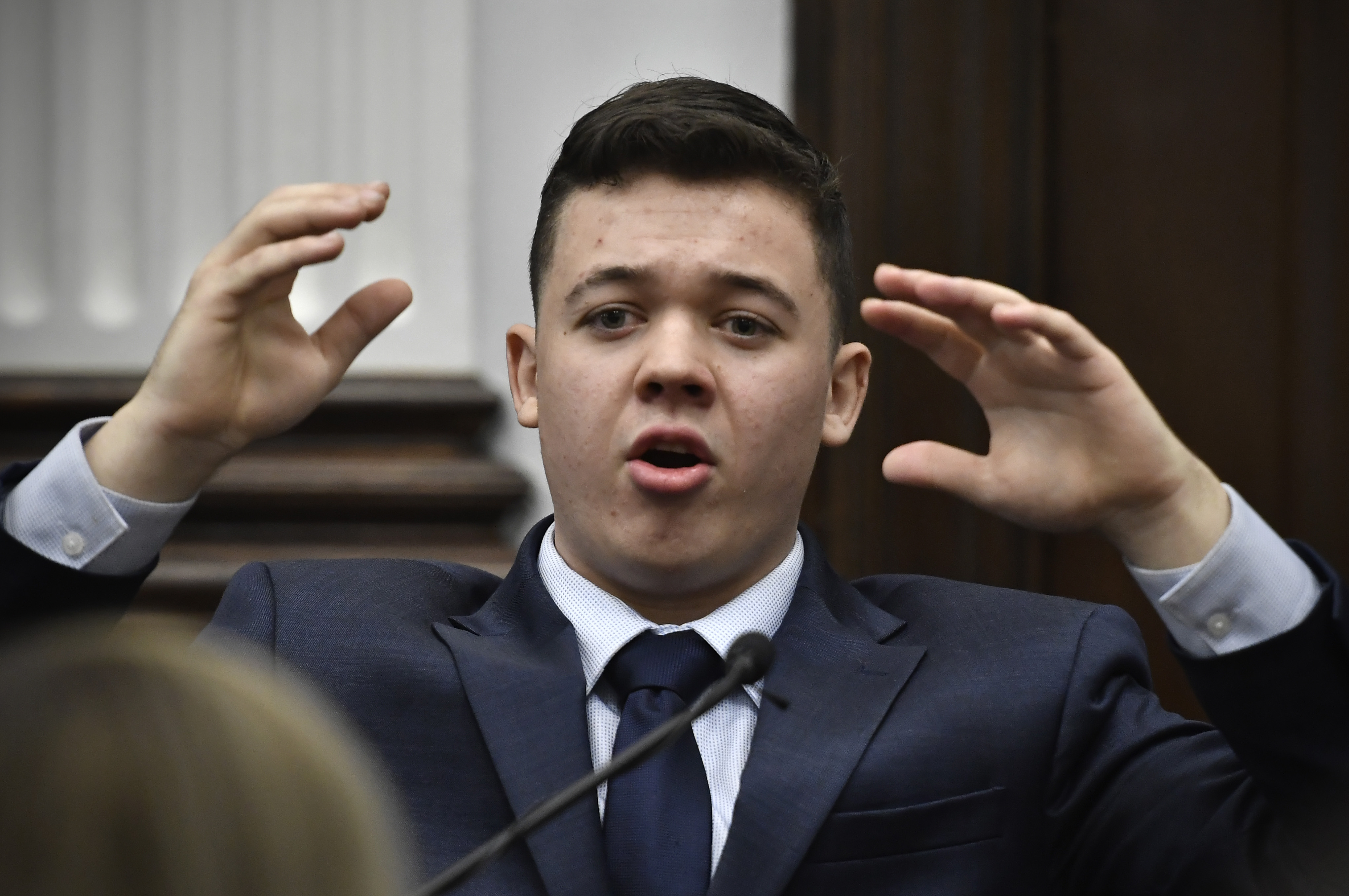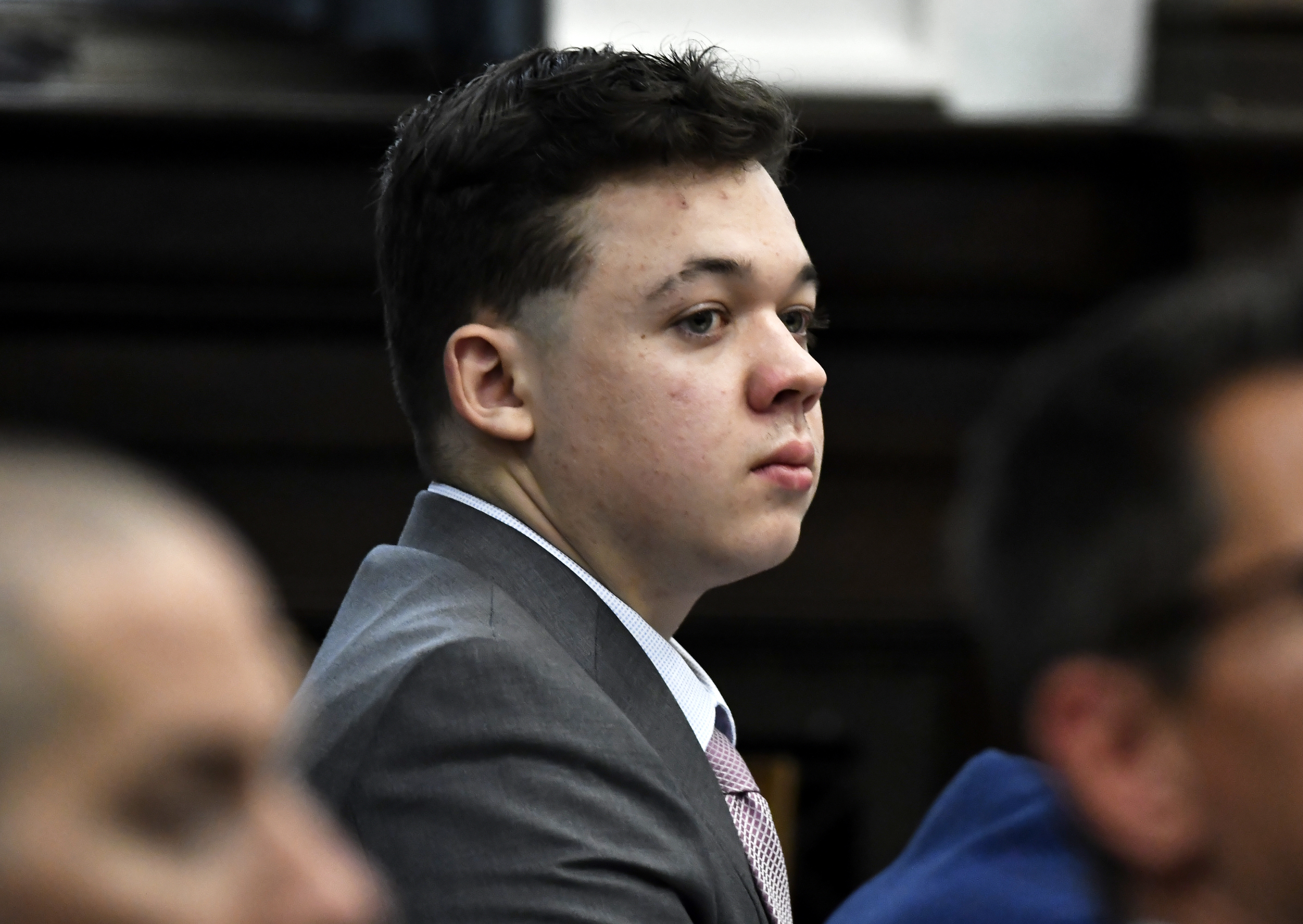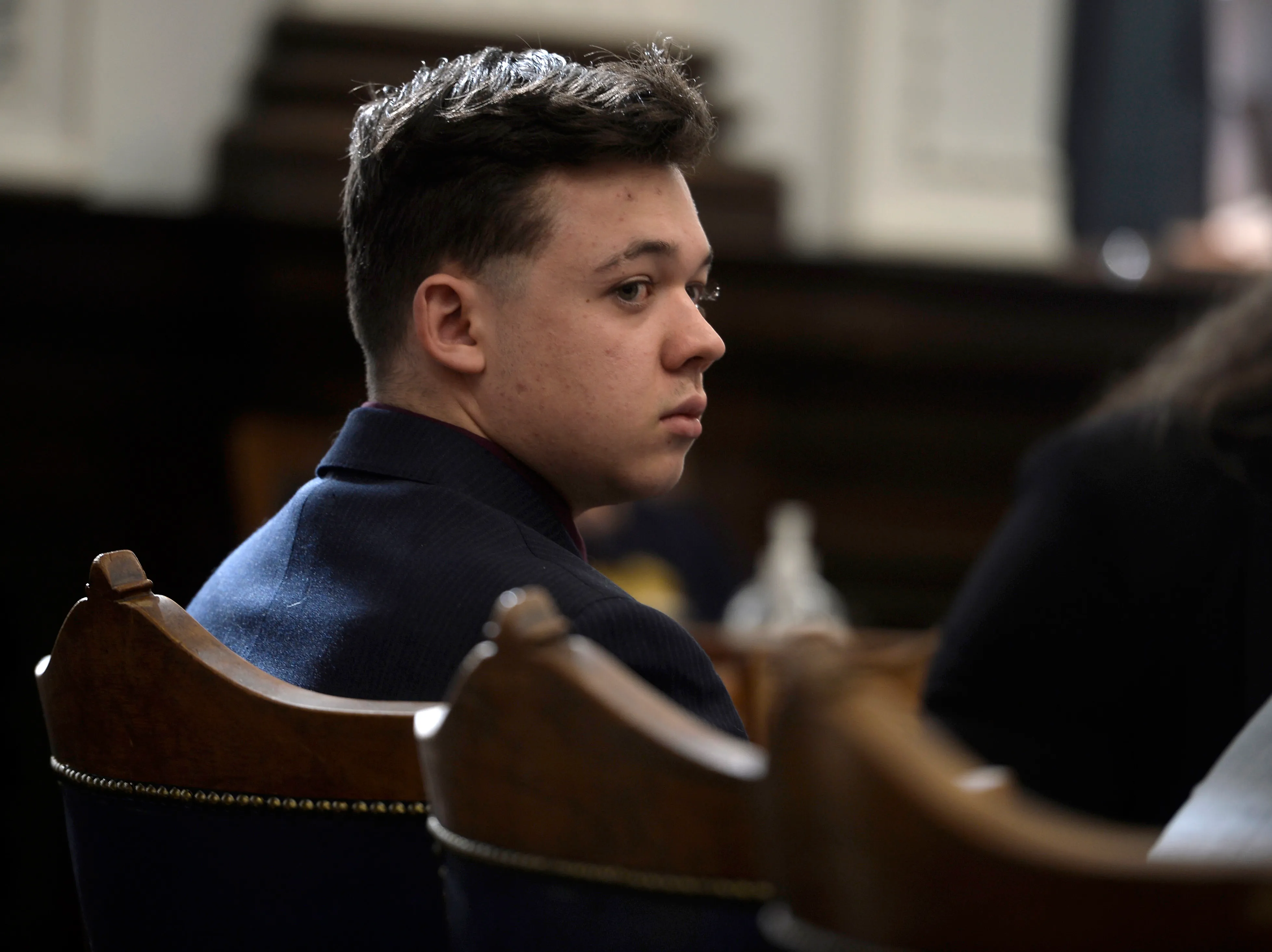The second week of the Kyle Rittenhouse trial has come to an end, bringing with it heightened emotions and heated testimony.
Now, jurors will soon begin deliberating in a case that left Americans divided over whether Rittenhouse was a patriot taking a stand against lawlessness or a vigilante.
Rittenhouse, now 18, killed two men and wounded a third during a night of turbulent demonstrations against racial injustice in Kenosha in the summer of 2020.
LIVE COVERAGE: A live feed of Kyle Rittenhouse's murder trial is available when court is in session.
Feeling out of the loop? We'll catch you up on the Chicago news you need to know. Sign up for the weekly Chicago Catch-Up newsletter here.
The former police youth cadet from Antioch, Illinois, had gone to Kenosha with an AR-style semi-automatic rifle and a medical kit in what he said was an effort to protect property from the damaging protests that broke out over the shooting of Jacob Blake, a Black man, by a white Kenosha police officer.
While Rittenhouse is white, as were those he shot, the case has stirred debate over vigilantism, the right to bear arms and the unrest that erupted around the U.S. that summer over the killing of George Floyd and other police violence against Black people.
Wisconsin’s self-defense law allows someone to use deadly force only if “necessary to prevent imminent death or great bodily harm.” The jury must decide whether Rittenhouse believed he was in such peril and whether that belief was reasonable under the circumstances.
Here's a look back at some of the biggest moments from the trial so far.
1. Rittenhouse Takes the Stand
One of the most the riveting moments came when 18-year-old Rittenhouse told the jury that he was defending himself from attack when he used his rifle to kill two men and wound a third on the streets of Kenosha in the summer of 2020.
Rittenhouse testified he fatally shot Joseph Rosenbaum after Rosenbaum chased him and put his hand on the barrel of Rittenhouse's rifle. He said he then shot and killed Anthony Huber after Huber struck him in the neck with his skateboard and grabbed his gun.
When a third man, Gaige Grosskreutz, “lunges at me with his pistol pointed directly at my head,” Rittenhouse shot him, too, wounding him.
Rittenhouse cried as he described how Rosenbaum chased him.
As he began crying on the stand and appeared unable to speak, his mother, Wendy Rittenhouse, on a bench across the courtroom, sobbed loudly. Someone next to her put an arm around her. After the judge called a recess, jurors walked by Rittenhouse and looked on as he continued to cry.
Once his testimony resumed, Rittenhouse mostly kept his composure as he spent hours fielding questions from his attorneys and prosecutors.
Assistant District Attorney Thomas Binger began by asserting that Rittenhouse intended to kill all three men, which Rittenhouse repeatedly denied, saying he did only what he had to do to stop the person attacking him. Binger also asked Rittenhouse if he played shoot-'em-up video games.
He asked Rittenhouse why he was talking about the shootings now for the first time, drawing the ire of Judge Bruce Schroeder.
2. Judge, Prosecutors Clash During Rittenhouse Testimony
At multiple points during the cross-examination of Rittenhouse, the judge and prosecution got into heated arguments.
So what got the judge so angry?
Prosecutors earlier this year sought permission to introduce into evidence a brief video taken 15 days before the protest shootings, in which Rittenhouse is heard watching some men exit a CVS pharmacy and commenting that he wished he had his rifle so he could shoot them because he thought they were shoplifters.
Binger argued at a pretrial hearing that it showed Rittenhouse’s mindset as “a teenage vigilante, involving himself in things that don’t concern him.” But Schroeder questioned its relevance and said at a pretrial hearing that he was inclined not to allow it — but suggested he might reassess that at trial.
Binger peppered Rittenhouse with question after question asking him whether it was acceptable to use deadly force to protect people. The defense eventually objected and Schroeder angrily sent the jury out.
When Binger told the judge he had left the door open in his early ruling, Schroeder yelled: “For me! Not for you!”
Rittenhouse’s attorney also accused Binger of commenting on his client’s right to remain silent about the case, to which Binger responded that the defendant was tailoring his testimony to details already introduced in court.
That also angered Schroeder, who called it a “grave constitutional violation” to talk about the defendant’s silence and warning him that he “better stop.”
“That’s basically, it’s been basic law in this country for 40 years, 50 years,” Schroeder said. “I have no idea why you would do something like that.”
3. Rittenhouse Murder Case Thrown into Jeopardy by Mistrial Bid
The murder case against Rittenhouse was thrown into jeopardy when his lawyers asked for a mistrial over what appeared to be out-of-bounds questions asked of Rittenhouse by the chief prosecutor.
Rittenhouse attorney Mark Richards suggested Binger might be attempting to provoke a mistrial. The defense asked for a mistrial with prejudice, meaning that if it is granted, Rittenhouse cannot be retried in the shootings.
Judge Schroeder did not immediately rule on the request but was clearly angry at the prosecution, telling Binger: “When you say that that you were acting in good faith, I don’t believe that.”
4. Prosecution Witnesses Appear to Bolster His Defense
Prosecutors wrapped up more than a week of testimony at Kyle Rittenhouse’s homicide trial after calling more than a dozen witnesses — some appearing to help the defense more than the prosecution.
The onus was on prosecutors to counter Rittenhouse’s self-defense claim in shooting dead two protesters and wounding a third at a protest in Kenosha last year.
Prosecutors endeavored to show Rittenhouse’s fears for his life on the night of Aug. 25, 2020, weren’t justified. But successive state witnesses, legal experts said, seemed to buttress the defense assertion that Rittenhouse had good reason to be afraid.
Ryan Balch is a military veteran who carried an AR-style rifle that night and patrolled with Rittenhouse. He told jurors how Rosenbaum made ominous threats within earshot of Rittenhouse.
“If I catch any of you guys alone tonight I’m going to f—- kill you!” He recalled Rosenbaum shouting.
Another witness, videographer Richie McGinniss, described Rosenbaum chasing Rittenhouse and lunging for Rittenhouse’s gun. When prosecutor Thomas Binger pressed McGinniss to concede he didn't know what Rosenbaum's intent was, McGinniss had a pointed — and damaging — answer.
“Well,” McGinniss promptly replied, “he said, `F—- you.′ And then he reached for the weapon.”
McGinniss also described Rittenhouse as appearing to do all he could to flee and even shouting “friendly, friendly, friendly” at Rosenbaum to convey he meant no harm.
Grosskreutz is another state witness who may have helped the defense case as much as the prosecution's. He testified that he carried a loaded pistol that night and acknowledged that it was aimed at Rittenhouse when Rittenhouse shot him — although Grosskreutz maintained he didn't intentionally aim the gun and said he wouldn't have fired.
The prosecution suffered another potential blow when Rosenbaum’s fiancée, Kariann Swart, disclosed that he was on medication for bipolar disorder and depression but hadn't filled his prescriptions because the local pharmacy was boarded up due to the unrest — information Rittenhouse’s lawyers could use in their bid to portray Rosenbaum as the aggressor.
On the day he was killed, Rosenbaum, 36, had been released from a Milwaukee hospital. The jury was told that much, but not why he had been admitted — after a suicide attempt.
Rosenbaum’s killing has emerged as one of the most crucial moments that night because it set in motion the bloodshed that followed moments later.
5. Juror Dismissed Over Joke About Jacob Blake Shooting
A juror in the murder trial was dismissed after a court security officer reported that the man told a joke about the police shooting of Blake, which set off protests in the Wisconsin city where Rittenhouse is accused of shooting three people.
The judge presiding over the trial said the security officer reported the remarks earlier this week. Prosecutor Thomas Binger said the remarks as shared showed racial bias. Blake, who is Black, was shot by a white Kenosha police officer and left partially paralyzed.
When Schroeder called the juror into the courtroom to discuss what he said, the juror said he didn't want to repeat his comments. But Schroeder said it was “clear that the appearance of bias is present and it would seriously undermine the outcome of the case” and that the juror would be dismissed.
The juror then responded: “It wasn’t anything to do with the case. It wasn’t anything to do with Kyle."
6. What Came of Hero Testimony at Rittenhouse Trial?
An effort by prosecutors to portray one of the men Rittenhouse shot as a hero never got off the ground.
Huber's great-aunt, Susan Hughes, was testifying about Huber in a matter-of-fact manner, talking about their relationship, how he ended up at the protest and how he always carried a skateboard.
Then prosecutor James Kraus posed a question: “We’ve seen video here, and you may have seen video as well, that Anthony Huber ran towards Kyle Rittenhouse while Kyle Rittenhouse was armed. Were you surprised, when you heard about that? Were you surprised by his actions?”
As defense attorney Corey Chirafisi swiftly objected, Kraus posed another: “Had you ever seen Anthony Huber run towards danger?”
Hughes said, “Yes,” before Chirafisi objected again and testimony was stopped.
Without the jurors present, Chirafisi argued that if prosecutors were allowed to present evidence that characterizes Huber as a peaceful man, then the defense would be allowed to bring up evidence from Huber’s past that could paint a different picture.
That included criminal cases involving alleged violence Huber committed against his own family members, with the defense reciting in courtroom a detailed account of those allegations.
“I would normally not move to admit those,” Chirafisi said. “However, if they’re saying that this is a peaceful man... ."
Schroeder agreed, and Kraus withdrew the line of questioning, effectively ending Hughes' testimony.
7. Blow-Up at Rittenhouse Trial Over Enlarging Photos and Video
Attorneys in Rittenhouse's murder trial sparred over the technology used to zoom in on video and create enlarged images, with prosecutors alleging the defense was taking advantage of the 75-year-old judge's admitted lack of understanding about current technology.
“I will tell you that I totally agree with your comment about my lack of familiarity with these concepts,” Schroeder told the attorneys without the jury present. “This is a difficult concept for me, yes.”
In both cases, prosecutors were arguing for enlarging key images on the night last summer that Rittenhouse shot and killed two protesters and injured a third on the streets of Kenosha. Much of the action that night was captured on sometimes hard-to-decipher cellphone video, as well as by a drone.
The defense rested its case this week, but not before arguing with prosecutors about whether an enlarged image taken from a drone video could be admitted into evidence. Schroeder, following arguments held without the jury present, said he would allow the image, while admitting he didn't understand the technology used by a state crime lab employee to enlarge it.
“With all due respect to your honor, I think the defense is trying to take advantage of your lack of knowledge about technology," Kraus said.
Kraus argued that the way the images were enlarged was the “industry standard” and for the defense to “then try to pretend this is all voodoo magic is preposterous." He said the defense attempt to get the evidence tossed out because it shows “their client is lying ... they are stooping to this level to try to keep it out.”
Prosecutors wanted to use the image to rebut Rittenhouse's testimony that he didn't point his gun at protesters just before he was chased by Rosenbaum, whom Rittenhouse shot and killed. Rittenhouse argues he shot him in self-defense.
Schroeder used a magnifying glass to examine the image in question and also walked right up to a large screen to get a better look. He ultimately allowed the image to be admitted, but Rittenhouse’s defense attorney was also permitted to question the crime lab analyst about the software used to enlarge it with the jury present.
The judge said he was leaving it up to the jury to decide how much weight to give the image.





